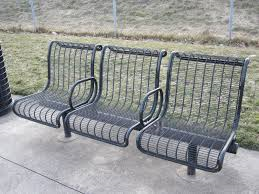Content Control Controversy : A Summary of Melissa King’s Article
In her article, “Better Online Living through Content Moderation”, Melissa King discuses the necessity of “content control features”, such as “block and ignore functions, content/trigger warnings, blocklists and privacy options”, on the internet and the “cultural opposition” against it. She explains that the these “tools” are helpful to “users [that] may suffer from PTSD and need to avoid topics and people that trigger their anxiety”. Kings argues that “nobody should be required to read or listen to content if they do not want to”.
She continues the article with talking about the oppositions raised against “content control”. The people against these “tools” retaliate by called the users of them “weak” and “too sensitive”. King suggests that the “opponents are creating a culture that pressures people to expose themselves to experiences far more catastrophic than they can handle” and that “it becomes entirely the victim’s problem when they are attacked online, no matter the situation, and they should ‘just deal with it'”. A common argument against “content control” is that the victims are just blowing things out of proportion and that “they should try being ‘less sensitive'”. King states that these arguments often result in an “informal parallel to Exposure Therapy”, which is “a type of therapy designed to combat severe anxiety through gradual and controlled exposure to its source, to inure an individual to these triggers and lesson the disruptions they can cause”. When people are discussing “content control” they often misinterpret the concept of “Exposure Therapy” and they fail to realize that “without controlled exposure, someone suffering from PTSD is likely to have their trauma magnified rather than reduced when faced with the triggering content”.
As she goes on, she provides more arguments against “content control”, such as the “myth” that when someone is harassed online, it is “merely mean words said on the internet, with no real threat to the safety or their family”. Some people do no believe that this harassment can cause PTSD because “according to popular culture, this is something only veterans suffer”. King disagrees with this idea and argues that it actually can. To support her argument she uses Caleb Lack, a clinical psychologist and psychology professor who specializes in treating anxiety disorders, as a source. She provides a quote from him saying:
“Bullying has long been known to have a severe impact on mental health, particularly if the bullying is repeated and prolonged… So, given what we know about PTSD, and given what we know about the effects of bullying (cyber and otherwise) on mental health, I think it’s relatively safe to say that “Yes, you can ‘get’ PTSD from Twitter.” One needs to be careful, though, to be specific about this: it’s the bullying and harassment that could lead to PTSD or PTSD symptoms (as well as depression, increased suicidality, and so on), not anything inherent to Twitter itself.”
Then, King discusses hate groups that are known for discouraging victims from the use of “content control”. One example of this is Gamergate, a group that is ” notorious for doing everything in its power to threaten people into silence– from calling and threatening family members, to posting pictures of their targets’ homes and addresses online”. She also argues that women are one of the main “targets” to online harassment when they are in “male dominated” areas, such as “the tech industry of in video game culture”. Two women that can testify to this are “Zoe Quinn (a video game developer and co-founder of Crash Override) and Anita Sarkeesian (creator of the YouTube channel ‘Feminist Frequency’ and the video series ‘Tropes vs Women in Video Games'”. She concludes the article with the argument that “people should be allowed to set their own personal boundaries and disregarding those personal boundaries should be seen as disrespectful at best”.
Color Walking
In Phia Bennin and Bredan McMullan’s article, “Color Walking”, They explain William Burroughs’s creative tool he used “to inspire students”, called color walks. They give instructions on how to do a color walk. You simply walk out of your door and pick a color. Then follow that color “from object to object” wherever it leads you. They also talk about their own experience with color walk, switching from color to color. There is also a diagram showing where they went and what colors they saw. The end the article with a few tips on how to make sure your color walk is successful. The tips include: “give yourself and hour of uninterrupted time…follow the [color] that makes your heart go thump-thump, [and] if you get lost, pick another color. If you get really lost, you’re on the right track”.
Are Public Bathrooms Really ‘Accommodating’? : A Summary of Emily Bazelon’s Article
In Emily Bazelon’s article “Making Bathrooms More Accommodating”, she argues that public bathrooms should be more “accommodating” to fit the needs of all groups of people, and not just the socially constructed genders, male and female. She begins by giving insight on the struggles that transgender people have when they have to which restroom to enter. It is difficult for them because their only options are “Men” and “Women.” Bazelon states that if they enter and the people inside “think [they’ve] confused male and female and walked through the wrong door, [they] risk discomfort, or even real trouble.” She argues that this is because the gender categories which determine who can enter the restrooms are “fixed.” According to Bazelon, the idea of “mixing male and female anatomy in [multi-stall] bathrooms and locker rooms” is a touchy subject for a lot of people. In Houston, a law that “protected against discrimination in housing and employment, [due to] race, age ,sexual orientation and gender identity” was voted against and given the nickname, the “bathroom ordinance”. The “opponents” of the law even made shirts with images of a man threatening a girl in the bathroom, in order to discourage people from supporting the law, by “playing on voters’ fears.”
To take her argument a step further, Bazelon provides a story of a transgender teenager, male to female, at a high school in Illinois, who was not allowed to change in the girls’ locker room because of privacy concerns”. Instead, she was sent down the hall to a separate room. Her parents brought a “civil rights complaint”, which resulted in the Department of Education asking the district to allow her to shower and change in the girls’ locker with her peers. They suggested a privacy curtain that she and any other girl could use. Bazelon uses this story as a example of how it is “tricky” for school districts to adjust certain policies to “accommodate” transgender teens.
She then adresses the term “accomodate” , which comes from the Latin word for “to make fitting.” She defines the ward accommodate as a means “to adapt, to bring into agreement or harmony, to furnish with something desired or needed, to favor or oblige.” She provides the negative and positive connotations of the word. The word “accommodation” implies a separation between “the normal and the other.” In contrast, is also provides a “possibility of mutual give and take.”
Later in the article, she bring up the problem of women having to wait in long lines for an open stall, while men have urinals that “keep the line moving” for them. She also claims that this is not seen as an issue of accommodation because men are seen as the “norm.”
According to Bazelon, the root of the issue of transgender people not being allowed in the bathrooms is because of the belief in the “biology of chromosomes.” In actuality, the real thing that transgender people are after is a sense of belonging and fitting in. She concludes the article with talking about the different “self-contorting accommodations” they end up making to “belong” in the bathrooms. She quotes strategies from a guide provided by the Transgender Law Center. The first one is “Invisibility: Don’t speak or look at anyone.” The second strategy is called “Gender Proof”, which says that they should point of physical characteristics that will prove they belong. Bazelon puts emphasis on the word “belong”, claiming that it is a “basic human need we all share.”
Is It Gender Neutral? : A Summary of Susan Tick’s Article
According to Susan Tick’s article,“His & Hers: Designing for a Post-Gender Society”, “today’s design landscape is deeply rooted in Modernism, a movement shaped by a predominately male perspective.” She argues for a change in this design to make it more “gender-neutral”. She suggests for designers to learn more about “society’s issues” and apply what they have learned to their designing process. An example of this is the design of the “workplace.” Today in the workplace, the “barriers and hierarchies” ,due to gender, are beginning to fade away. Women are taking more leadership roles in the workplace, challenging the “gender roles” that were once there. There is also the “new wave of feminism” and the LGBT rights movement challenging this concept. Tick states that people are now “craving more softness in interiors, with the open plan, the influence of hospitality, and and emphasis on tactile and textural materials.” Then she argues that this would be the best time for designer to think about “how they incorporate gender sensitivity in to their work.”
After discussing the workplace, Tick explains the “human phenomenon” of “masculine and feminine definitions being switched and obscured.” Examples of this can be found in fashion, which “embraces” this idea. She provides an examples of this by talking about the “military look” of “Alexander Wang’s women’s coat from Fall 2015” and Annemiek van deer Beek’s make-up line for men.
Tick also argues that “Gender roles” cause “outward appearances” to be confusing. Although people are assigned a certain gender at birth, they are allowed to decide what gender they identify” as. In fact, there are some college with students refusing to put their gender down on forms because they don’t want to be “identified” as male or female. There are even middle school children doing the same. Some schools are okay with this, and Tick encourages designers to keep up with these “trends.” She said that the view of transgender people has changed and provides an example of this. According to Tick, Maritine Rothblatt, CEO of United Therapeutics became the “highest paid female executive in the United States even though she was born biologically a male.”
Towards the end of the article, Tick talks about some of the changes that have been made so far, like the “gender-neutral or unisex bathrooms” at Google and provides an example of a time where these types of bathrooms would have been useful. Her example was a case where a worker had a “gender-reassignment surgery” done over their break. Apparently, the coworkers were not okay with this person using the bathrooms, because of and She explains the importance of “making people feel accommodated”,not only in the bathrooms, but everywhere. This leads to the subject of Americans with disabilities and how they also experience a disadvantage, but Tick says that “gender issues” can not be handled to same way that their issues are handled, with “regulations and compliance.”It also will take time, considering “we are only at the very beginning with gender-neutral design.”
The Reality of Homelessness: A Summary of Nersessova’s Article
This article discusses Margaret Morton’s book “The Tunnel: The Underground Homeless of New York City” and the photographs of the homes built by the homeless people in the city. Nersessova does this using the views of the Situationalist International theory from Karl Marx.
In the beginning of the article Neressova defines homelessness as being without a stable home. The term stable is important because she explains that the people we call homeless have built homes for themselves, but they are not stable. She also talks about the designs of some of these homes they have created and what they represent. She said that the way each home is created is significant to the person living there because “identity is closely tied to one’s place of home” and a result of them always moving is that their identity is “consistently fragile”. The fact that they continue to rebuild theses homes each type they move, shows that their “creative response to instability”. A common issue homeless people faced was the city destroying their homes and closing off the tunnels where they were built, taking away their identity. This often makes them vulnerable and she explains that this represents the “universal relationship between space and the splintered identity”. They space they have determines how they will build their homes and the homes they build become their identity. This changes when they have to change the space.
Nersessova, then talks about Morton’s photography of the urban areas in New York and the role they play in a “society of the spectacle”. She discusses this using the views of the Situationist International (SI) which acknowledges the difference between the “society of the spectacle” and the “reality of homelessness”. According to the SI, people use the media to decide what they will consume and how they understand themselves.
In Morton’s book, she discusses the significance of the tunnels with some of the people she interviewed that lived in the tunnels. A common thing they said was that they felt safe in the tunnels, as odd as it may seem, even though it looked like a dangerous place. They didn’t have worry about getting robbed or attacked, because they felt like no one want to risk coming into the dark tunnel. They also liked the tunnels and the underground part of the city because there was less traffic, which made it safer for them.
The photographs in Morton’s book gives a visual of what is the reality of homeless people’s lives. It provides an inside look at how they actually live and instead of how we, as a society, assume they do. It also gives the views of outsiders looking in on their lives. They are afraid of the tunnels because they fear the unknown and that is a product of our society.
Architectural Exclusion: A Summary of Schindler’s Article
Architectural exclusion is when man-made, built environments are designed to exclude certain types or groups of people. Schindler gives several examples of this throughout the article. One of the examples of this would be exclusion through the subway system. Often, rich communities in Atlanta are against allowing MARTA to have stops in their neighborhoods, because they know that this will encourage the poor and people of color to come there. It will also stop them from getting jobs in the area because they will not have a ride to work. Schindler also talks about how white residents in a suburban community once had a road closed because it gave a nearby, black neighborhood access to their area. They even covered it up by saying that closing the road would help reduce traffic.
According to the N.Y. Times article “Where has the Northern State Gone?” written by Philip Lutz, Robert Moses, known as the “Master Builder” of New York, wanted to build “low-hanging overpasses on the Long Island parkways that led to Jones beach…so that buses could not pass under them.” Schindler then explains that this affected the people of color and poor people because they were that ones that rode the bus the most. This means they were excluded from going to Jones Beach.
Architectural exclusion also, serves as a regulator, keeping people of color and poor people separated from everyone else. An example of this would be the fact that park benches are designed to have armrests so that homeless people will not sleep comfortably on them. This type of regulation is discreet because to most people, they assume the purpose of the armrests are to divide the benches. Schindler explains that this shows how effective this type of regulation is and how it occurs with no one suspecting it is taking place. Another example Schindler provides is architecture being used to hide neighborhoods from non-residents and to discourage them from entering. They can even be designed to keep the residents in. One way they do this is a residential parking permit requirement. This keeps the resident from wanting to invite guests over, because they know they will have to pay for a guest permit so that their friends can park in the street. The roads of these neighborhoods are often curvy and full of dead ends, which confuses non-residents and makes them not want to enter the area.
There are also regulations in transit, street, and highways that keep visitors out of these communities. Schindler gives an example from Lessig, which says that putting a highway between two neighborhoods prevents them from interacting with each other. Highways were put in the middle of cities to get rid of the low income and black communities. One-way streets are used to keep traffic out of certain areas, mainly the wealthy ones. Bridge exits and highway ramps were used to direct traffic in the direction away from the rich neighborhoods to keep non-residents out. This was very inconvenient for drivers, taking them out of the way to get to where they were trying to go. Some of these communities took matters into their own hands to keep their neighborhoods exclusive. In Darien, Connecticut, they don’t have many street signs because they want to confused visitors and keep them from finding the rich neighborhoods. In Bolinas, California, people would remove the signs telling drivers the location of the city, so that they would not have visitors. Architectural exclusion can easily be overlooked, because it is often covered up by the people designing the environment where it occurs.





